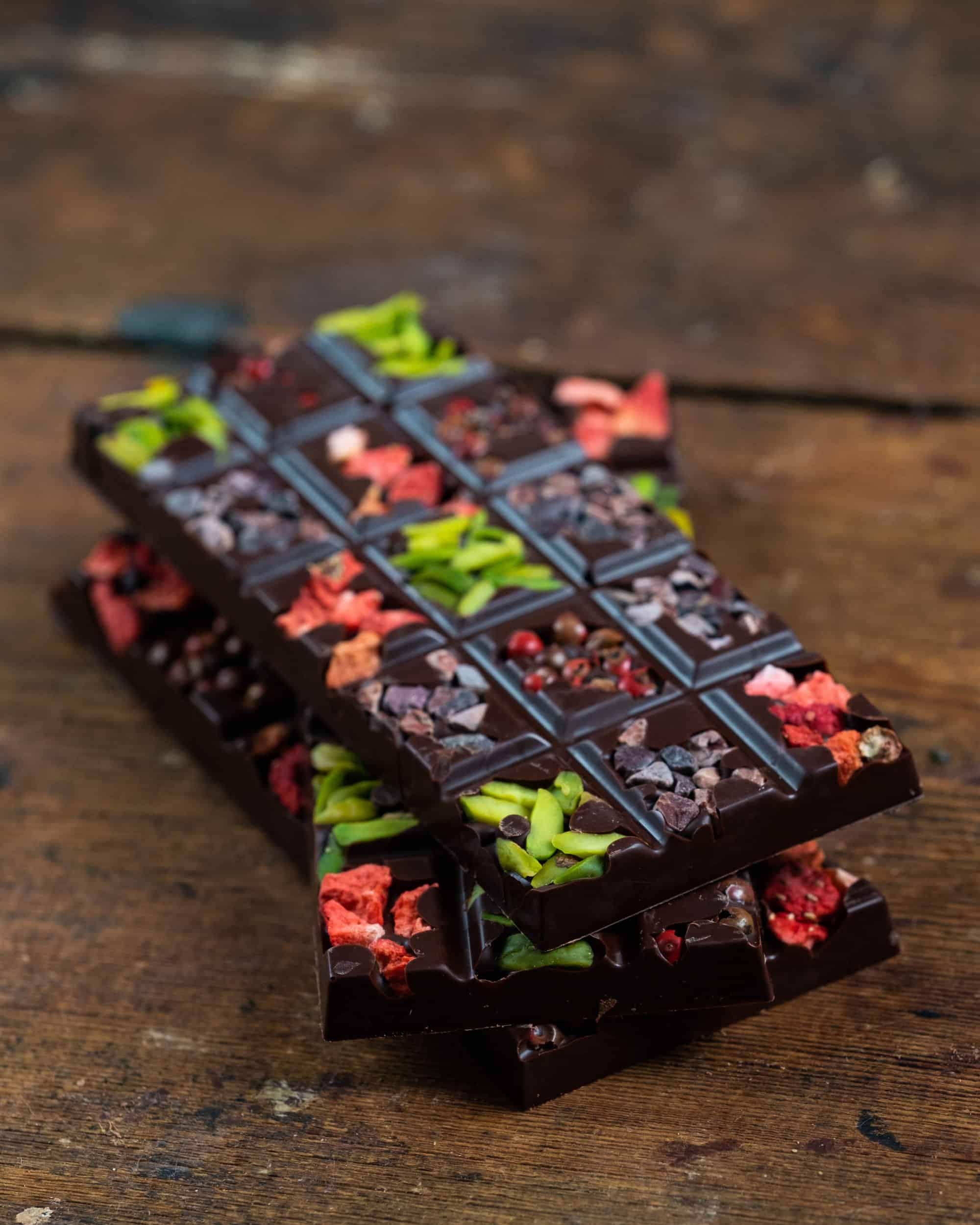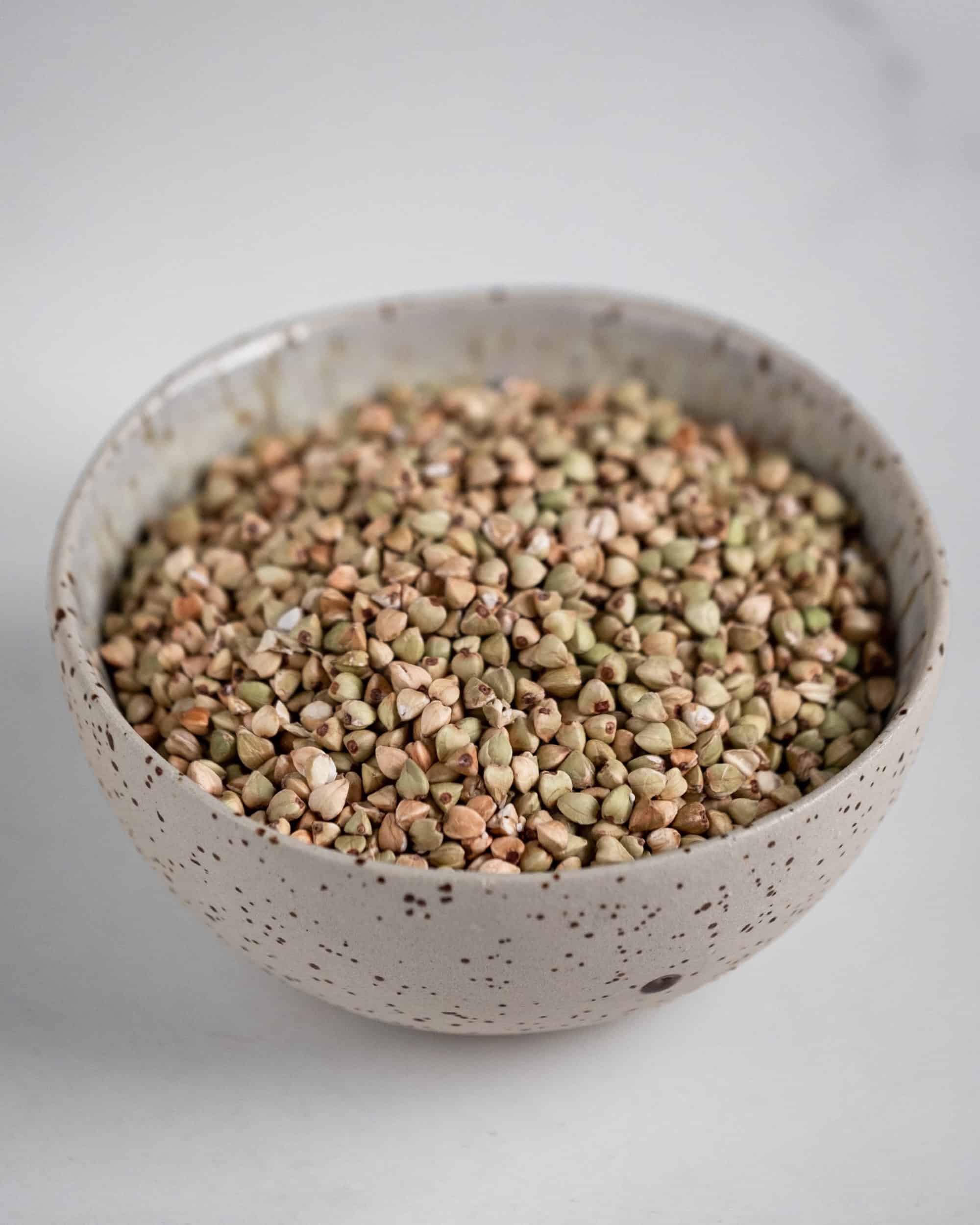
Buckwheat is a wonderful grain to use in desserts and chocolate because it’s rather neutral in flavour, but offers a fantastic crunch when it’s slightly sprouted and dehydrated. Learn how to activate buckwheat at home and save yourself money.
Why is it referred to as “activated” buckwheat ?
When you buy buckwheat from the shop and it’s in a package, it’s dormant. It doesn’t become active and alive again until you soak it. That’s why learning how to activate buckwheat at home is so useful.
If you think about the way things work in nature, this mechanism makes a lot of sense. In nature, buckwheat would grow as grass and, when the grass reaches a certain maturity, it will flower. This is the way nature re-populates itself. This flower has seeds and those seeds are the buckwheat grains. As the flower dies, the seeds dry and fall off and into the surrounding earth.
Overtime, when left to its own devices, the seed will become buried in the earth and will lay dormant until a strong rain comes, soaking the earth and the seeds within it. At this time, the buckwheat becomes alive again and begins the process of growing into grass once again.
At home, when we buy the buckwheat seeds (and this is true of all seeds and nuts) we are acting like mother nature when we soak the seeds, bringing them back to life in order to reap all their wonderful “alive” benefits.
Where To Buy Raw Buckwheat
An important thing to note is that not all buckwheat is raw. There’s another product that’s often labelled as “Kasha” which is roasted buckwheat. This is also a really yummy variation of this grain, but won’t sprout as it’s been cooked. You can tell if the buckwheat has been roasted, because it’ll be brown in colour whereas raw buckwheat is slightly greenish and cream coloured.
You can find raw buckwheat at most health food stores in the bulk foods or grains section. Personally, I buy my raw buckwheat from Tree Harvest.
Does Buckwheat Contain Wheat?
Despite the name indicating it has wheat in it, buckwheat is wheat free. Actually, buckwheat is not a grain at all, it’s a seed, similar to Quinoa.
Activating Buckwheat
- Buckwheat – however much you need or want to activate
Water – best to use spring, bottled or distilled water v.s tap water - Place the buckwheat in a bowl about 1 1/2 times it’s mass – when it soaks, it’ll absorb water and the overall mass will multiply.
- Fill the bowl with enough water to cover the buckwheat by 1-2 inches – this will insure it has enough water to soak up.
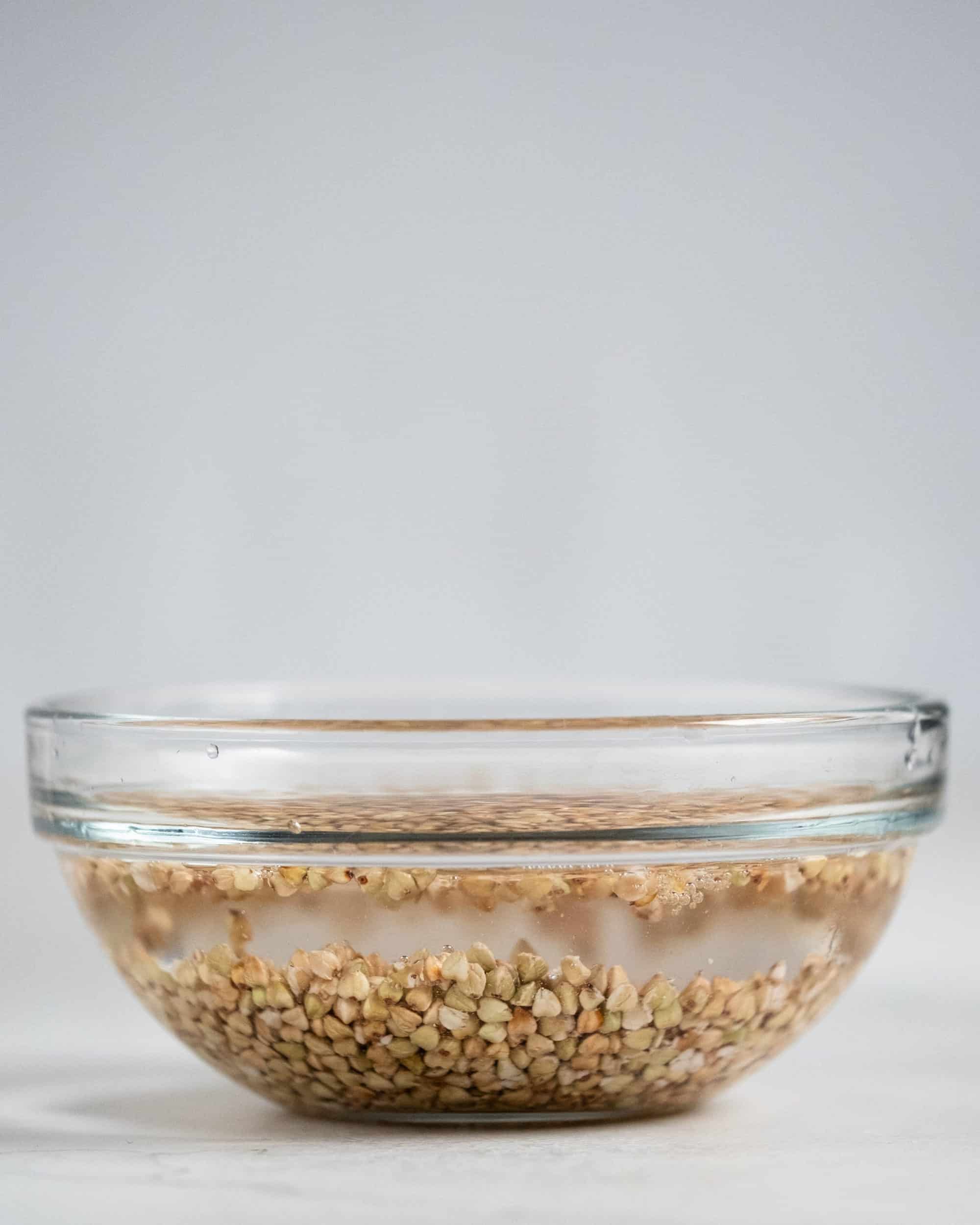
2. Let the buckwheat soak 1 hour.
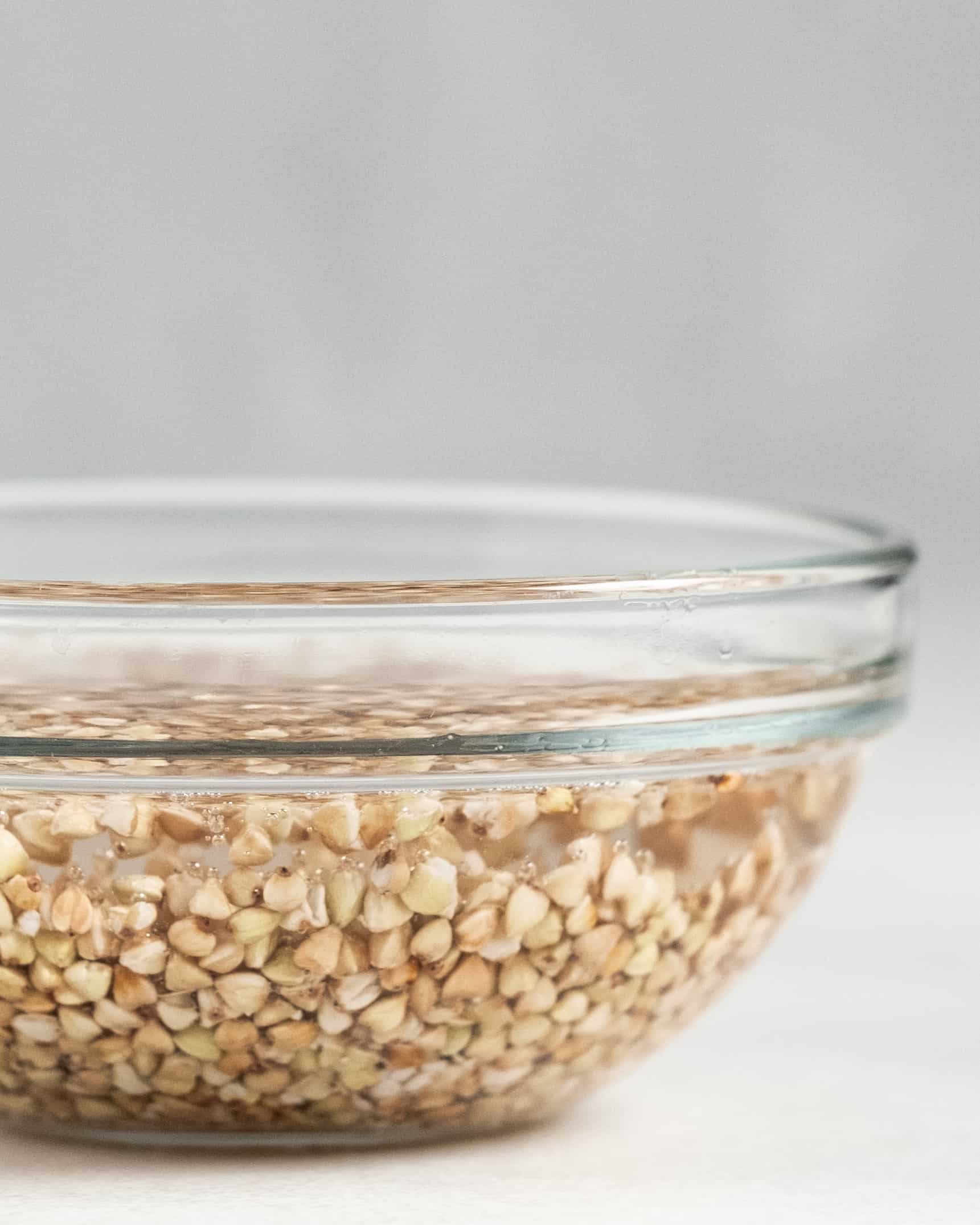
3. Using a fine sieve ( with holes smaller than the grains of buckwheat ) rinse the grain. You’ll notice the water has thickened and, sometimes, can be slightly pink. Rinse the grain until the water runs clear. You don’t need to be to precious about this step, just make sure it’s clean.
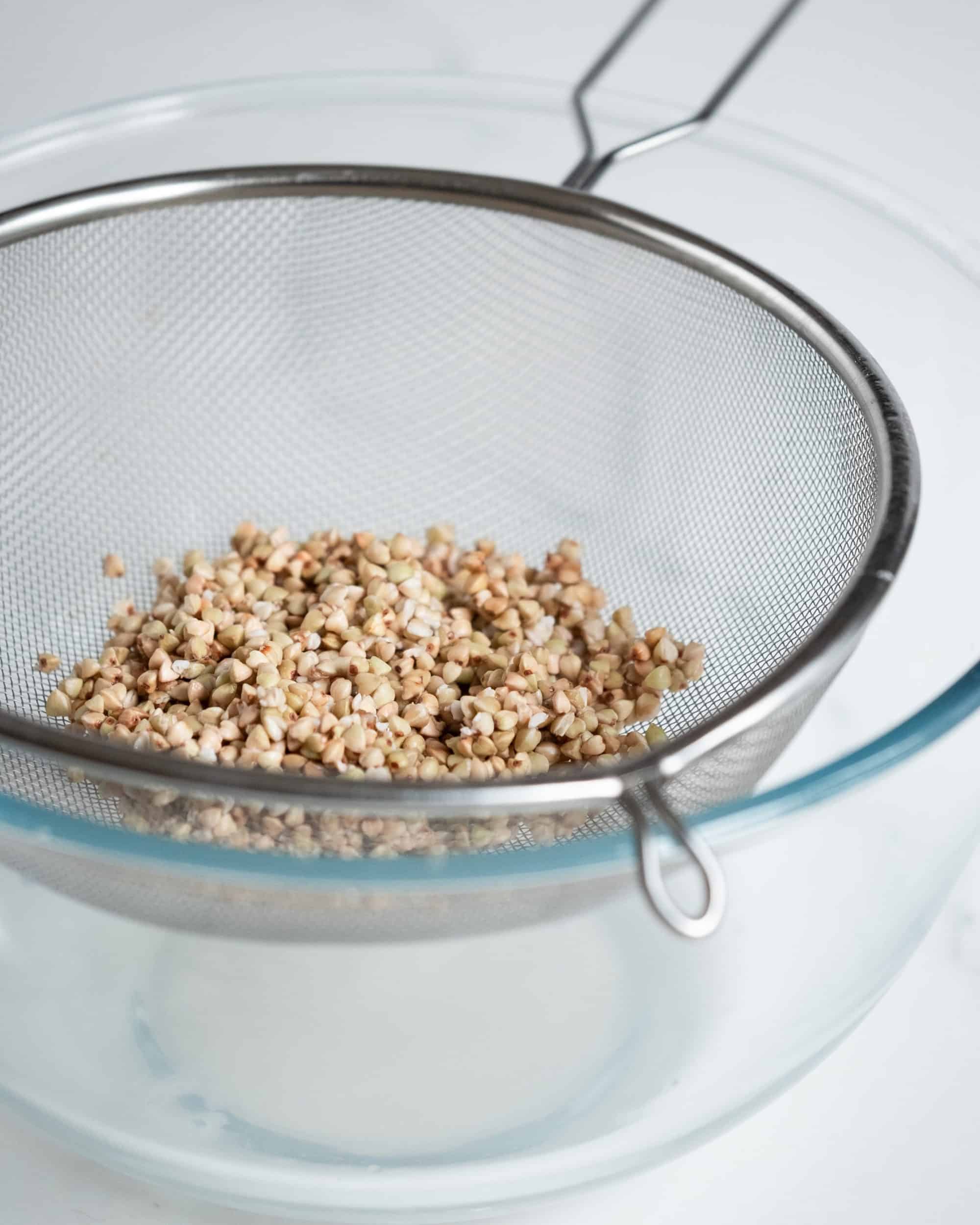
4. Transfer the rinsed grain into a bowl and place it in a warm-ish spot in your home for 10-24 hours, depending on the purpose you’re sprouting. If you’re sprouting to grow it into grass, you’ll want it to sprout longer, but if you’re sprouting to dry or candy / spice it, then it won’t need as much time.
5. For our purposes, we only want a tiny emergence of the “tail” of the grain to be visible. The longer this “tail” grows, the more bitter the grain will become and the less yummy it is.
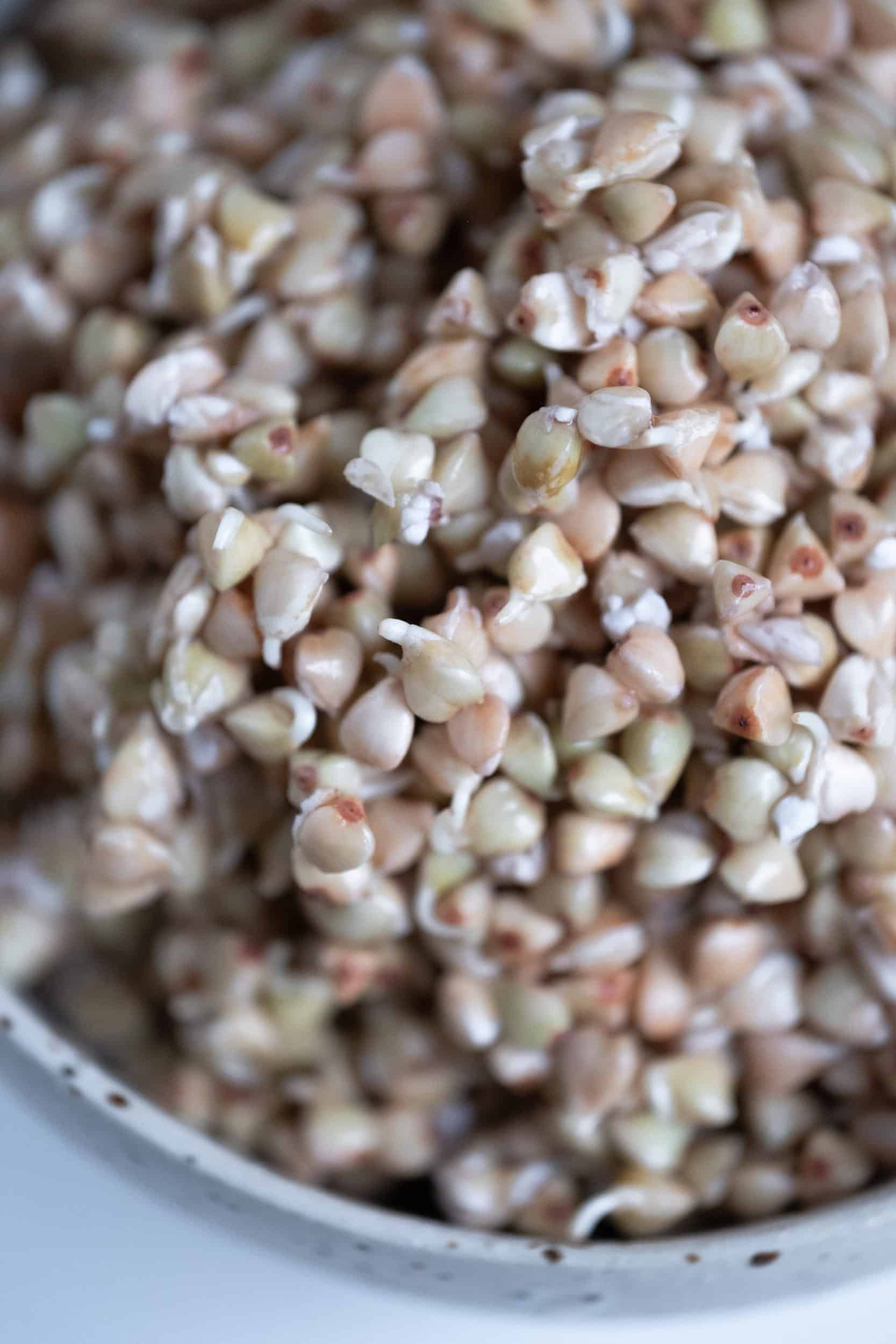
6. If it’s particularly warm in your home, you may need to rinse the grain as it sprouts to keep it hydrated and in sprouting mode. Simply put it in the sieve, as before, and run water over it for a minute or two. Then pop it back in the bowl to continue sprouting.
7. From here, you’ll rinse it one final time and then spread it onto a mesh dehydrator tray to dry at 115f until it’s crisp – about 10 hours. It will then store at room temp, in an airtight container, for several months.
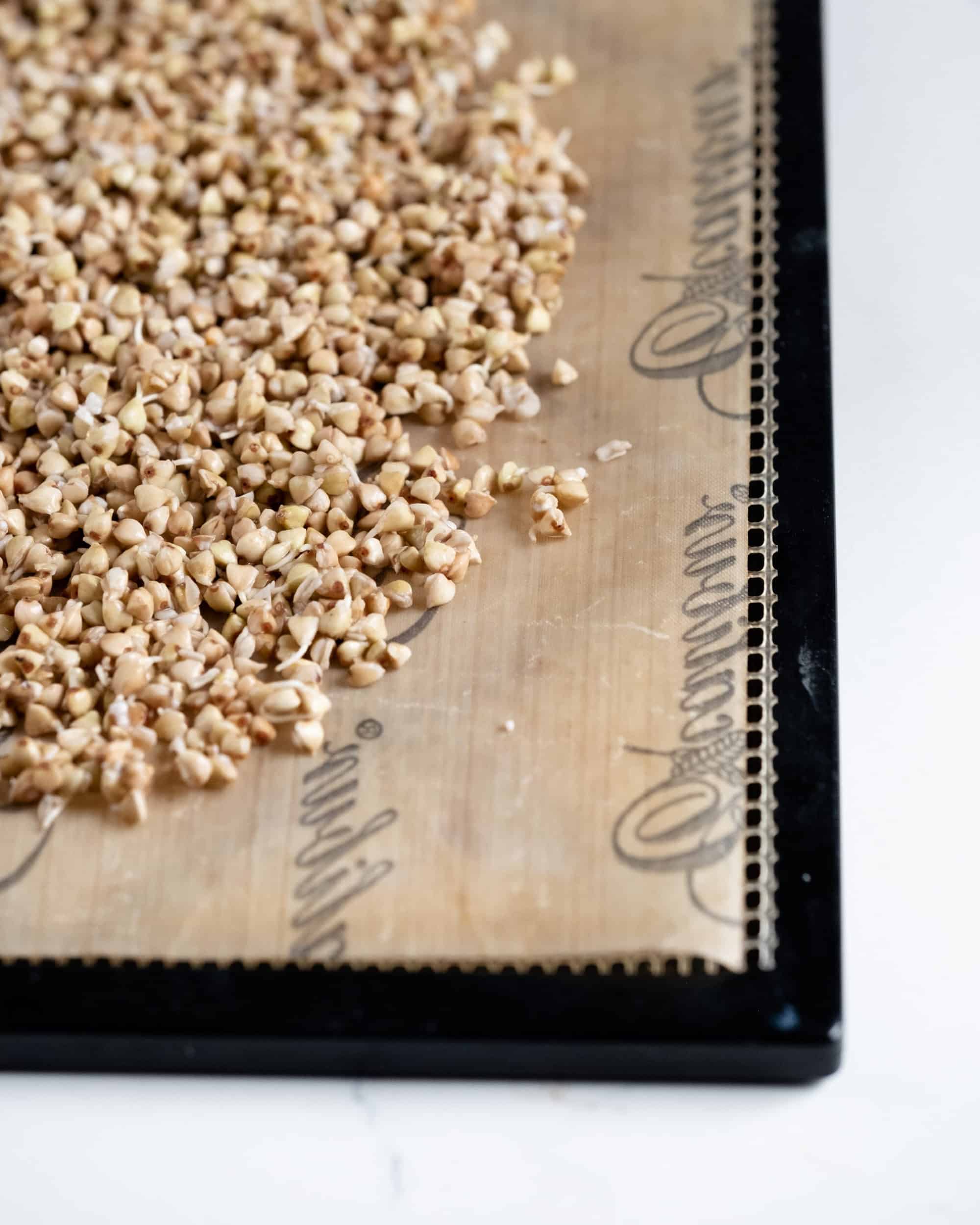
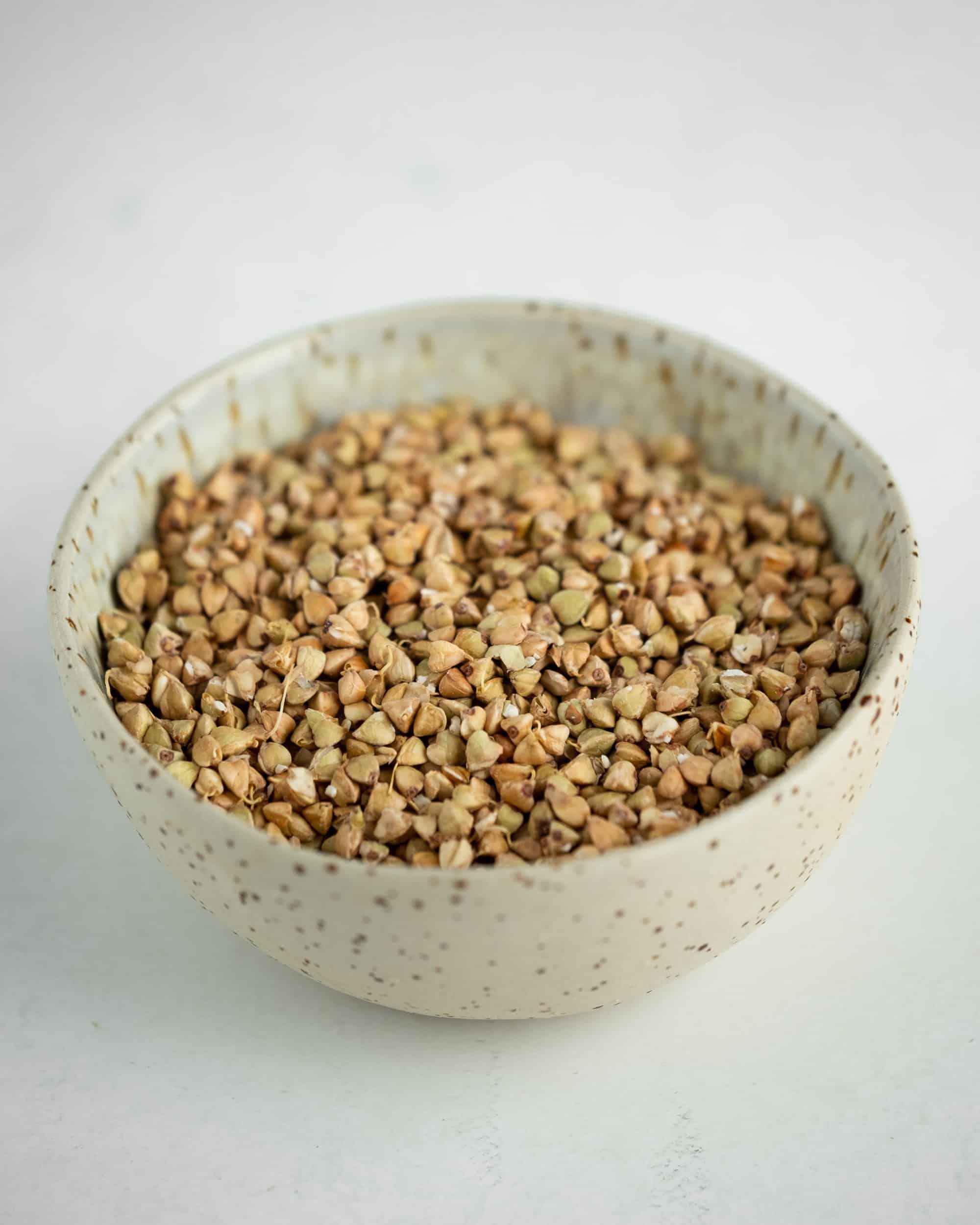
8. Alternatively, if you’re using it for candying, spicing, crackers, etc.. it’s now ready to be used in the recipe you are following.
Ways To Use Your Activated Buckwheat
How To Activate Buckwheat
Ingredients
- 100g raw buckwheat
- 200g filter or spring water
Instructions
- Fill the bowl with enough water to cover the buckwheat by 1-2 inches – this will insure it has enough water to soak up.
- Let the buckwheat soak 1 hour.
- Using a fine sieve ( with holes smaller than the grains of buckwheat ) rinse the grain. You’ll notice the water has thickened and, sometimes, can be slightly pink. Rinse the grain until the water runs clear. You don’t need to be to precious about this step, just make sure it’s clean.
- Transfer the rinsed grain into a bowl and place it in a warm-ish spot in your home for 10-24 hours, depending on the purpose you’re sprouting. If you’re sprouting to grow it into grass, you’ll want it to sprout longer, but if you’re sprouting to dry or candy / spice it, then it won’t need as much time.
- For our purposes, we only want a tiny emergence of the “tail” of the grain to be visible. The longer this “tail” grows, the more bitter the grain will become and the less yummy it is.
- If it’s particularly warm in your home, you may need to rinse the grain as it sprouts to keep it hydrated and in sprouting mode. Simply put it in the sieve, as before, and run water over it for a minute or two. Then pop it back in the bowl to continue sprouting.
- From here, you’ll rinse it one final time and then spread it onto a mesh dehydrator tray to dry at 115f until it’s crisp – about 10 hours. It will then store at room temp, in an airtight container, for several months.
- Alternatively, if you’re using it for candying, spicing, crackers, etc.. it’s now ready to be used in the recipe you are following.
As I said earlier, buckwheat can be activated and stored or can be used in a multitude of ways. From using the plain grain in chocolate for a crunch or candying it for the same purpose.
Minted Buckwheat – these are awesome in chocolate or on top of chocolate ice cream!
Linzer Cookies – here I use buckwheat to make soft biscuits. They are my favourite raw cookies.
Black Sesame Matcha Candy Bars – in this recipe I use buckwheat to create a thin wafer reminiscent of the wafer in a KitKat bar.
FREE Videos: Start watching and learning today
Are you a visual learner? Yeah, me too. These FREE livestream classes cover a wide range of topics within chocolate and dessert making.
Be the first to get free recipes and classes
Join my mailing list and be the first get free recipes and hear about upcoming classes.




